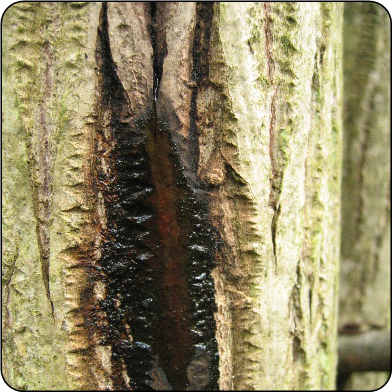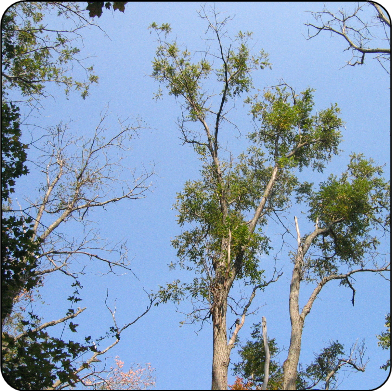Butternut canker
Information about butternut canker (Ophiognomonia clavigignenti-juglandacearum), a canker disease affecting trees in Ontario.
Overview
- Invasive – origins unknown, potentially from Asia.
- Butternut canker is a non-native disease that was first confirmed in Ontario in 1991, although some evidence indicates the disease may have been present since 1978.
- In Ontario, butternut is found as a scattered tree, or in small groups among other hardwoods in the deciduous and south-eastern portion of the Great Lakes-St. Lawrence forest regions.
“Invasive” refers to a species that has moved outside of its native habitat and threatens the new environment, economy or society by disrupting local ecosystems.
Host species
Butternut (Juglans cinerea) is the only natural host.
Characteristics and life cycle
- Fungus initially infects trees through buds, leaf scars, insect wounds and other openings in the bark, rapidly killing small branches.
- Spores produced on branches are carried down the stem by rain, resulting in multiple, and perennial stem cankers that eventually girdle and kill infected trees.
- The fungus can survive on dead trees for at least 2 years and is spread by rain-splashed spores, and possibly by insects, birds and seeds.

Symptoms and damage
- The most obvious symptoms of this disease are the elongated, sunken cankers, which commonly originate at leaf scars, buds, or wounds.
- In spring, an inky-black fluid exudes from cracks in the canker; in summer, the cankers appear as sooty black patches, often with a whitish margin.
- Trees are usually first infected in the lower crown and then die downward as spores from the cankers are washed down.
- Cankers spread around branches and trunks, eventually killing the tree.
- Older cankers can provide an entrance site for decay and other fungi.
- Trees of all ages and sizes can be infected by this disease.

Control measures
There is no known treatment for infected trees. All naturally occurring butternut trees are protected in Ontario under the Endangered Species Act and in Canada under the Species at Risk Act. A butternut health assessment must be conducted by a designated butternut health assessor to determine whether an authorization (such as a permit) is required under the Endangered Species Act before any butternut (healthy or infected) may be removed.